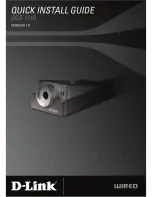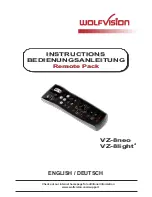
74
3. Wind the camera with one full revolution of the winding crank.
4. Replace the magazine and remove the slide.
5. Make the next exposure .
6. Repeat the procedurefor further exposures on the same frame.
Flash with film
Any flash unit can be connected to the 503 CWD via the PC flash terminal on the lens
for manually controlled flash exposure with flash sync speeds are up to 1/500s.
Automatic flash control, or dedicated flash, is provided by the camera’s built-in flash sen-
sor and electronics (TTL/OTF) that measure the light reflected from the central portion
of the film; a circle with a diameter of 40 mm.
The metering system is connected to a selector for setting film speed. When a Hasselblad
D−Flash 40 is attached − or an SCA 300 compatible flash unit is connected through an
SCA390 flash adaptor − the system controls the flash unit and cuts off the flash when the
exposure is correct. Under the left hand edge of the focusing screen an indicator light
shows when the flash is ready to be operated and also confirms if the flash output was
sufficient to give a correct exposure. The flash unit powers the camera’s electronics and
also the flash adaptor, when that is used.
Setting the film speed for TTL/OTF flash
The film speed is set via the ISO selector. This is marked in ISO/ASA settings from 64
− 4000. Note that certain films require compensation due to differences in reflective
properties of various emulsions. In these instances, the compensation can be made by
changing the film speed selector setting. The amount of compensation has to be deter-
mined by experiment. Alternatively you can replace the magazine with the Rear cover
MultiControl for a few test exposures. The grey surface acts as an 18% grey card to provide
a well-balanced starting point for exposures.
Please refer to your flash unit’s operating instructions for more information about other
functions when using the D−Flash 40, automatic flash light metering that conforms to
System SCA flash photography with flash sensors, or with non−automatic flash units.
Rear cover MultiControl (supplied)
The Rear Cover MultiControl (3051070) not only provides protection for the camera body
when the digital back is not attached but also provides flash check facility for cameras
featuring TTL/OTF (described separately) as well as a vignetting check facility.
Checking for possible vignetting is useful when filter combinations, attachments or
lens shades are used, to ensure the optimum from the accessories without the risk of
inadvertant vignetting.
With the cover in position you can see the so-called ‘exit pupil’ of the lens through the
small holes in the cover. A vignetting free lens has an exit pupil the exact shape of the
lens aperture. At maximum aperture there is slight vignetting with all lenses but at f/11
to f/16 the majority of lenses are free of vignetting.
Corner illumination is dependent on the size of the exit pupil. If the filter or lens shade
extends too far, the area of the exit pupil diminishes. The shading effect of a professional
lens shade, for example, is optimal when it has been extended as far as possible without
causing any visible corner vignetting. The amount of this extension is dependent on both
the working aperture and the focusing distance for the lens used.
Use the following method when any kind of lens accessory is in place and you want to
ensure a result free from vignetting:
1. Fit the accessory. Remove the film magazine but do not attach a Rear Cover
MultiControl just yet.
2. Set the shutter on a CF/CFi/CFE lens at the ‘F’ position and pre-release the camera to
open both the lens shutter and the auxiliary shutter. C/CB lens shutters should be set
at ‘B’ and a B exposure made. Use a cable release to lock the released position.









































